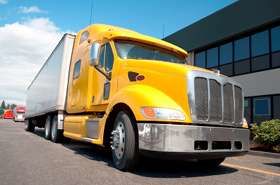Splitting Sleeper Berth Questions
Topic 12230 | Page 3

Brett - along with polywog's suggestion....suggest provide several dozen logging examples, and a log book sheet others can print out. So the examples can be used to fill-out log-book sheet and then have the correct log-examples shown.
Brett - along with polywog's suggestion....suggest provide several dozen logging examples, and a log book sheet others can print out. So the examples can be used to fill-out log-book sheet and then have the correct log-examples shown.
This is wiki material. Now go find the TT wiki.

We have a wiki?

We have a wiki?
Hahaha! Follow me! <- secret passage
Holy carp I have been lurking here for 3 + years and never new that.

Brett - along with polywog's suggestion....suggest provide several dozen logging examples, and a log book sheet others can print out. So the examples can be used to fill-out log-book sheet and then have the correct log-examples shown.
This is wiki material. Now go find the TT wiki.
No practice examples in the WIKI.

I'm actually developing some software for mobile and web to help study HOS , including the 8+2 split break, along with two other applications. ETA in a couple weeks, after a year in development. 8+2 or 2+8 is tricky, but very useful when time is tight. Gets even trickier when you do several in a row, like 8+2+8+2. If you're going to make use of it, need to know it inside and out, or you can find yourself with an expired clock, while still needing to put on miles.
HOS:
Hours Of Service
HOS refers to the logbook hours of service regulations.Be careful around Errol and his Wiki. If you don't succumb to the Wiki, he'll break out the cookies and you will hand no power left to resist.
New Reply:
New! Check out our help videos for a better understanding of our forum features

















Preview:
This topic has the following tags:
Hours Of Service Logbook Questions Understanding The Laws







 TT On Facebook
TT On Facebook
Brett can we have a sticky post at the top of the forum that describes frequent question and anwanser threads? Such as 8/2 spit and anything else that new people have lots if questions on?
Phox what a lot of the drivers have told you is correct about shippers and on duty/off duty, if your at Amazon they expect you to off load your trailer so you are on duty with a notation of off loading. If you go to Wal-Mart they tell you to drop a trailer into a door and bobtail to parking and they will let you know when you are done. Then your on duty/ tell you get to bobtail then sleeper. Lots of time I can get an 8 sleeper or a 10 hour brake at one of my regular Wal-Mart's. I have done 2 level 1 inspections. And counties level 2 and 3 inspections. I have had 2 times were they took good looks at my elogs. Both times were on level 2 inspections. They wanted to see adiqute time for pretrip delivers marking share there were no violations, and that you are on duty will you are being inspected.
Now to the original posters question my advise is its much easier to see on elogs how it works then to have it explained. But let's start at midnight. You pretrip and drive for 6 hours. Then make a delivery. Total time is 7 hours 1 hour on duty and 6 hours driving. So you have 8 hours to wait tell your back haul is ready. 8 hours sleeper that means you have 7 hours on duty and 5 hours drive time left. The time is now 1500 hours. So you drive tell 2000 that night and go off duty for 2 hours back on duty is 2200 hours you have 7 hours on duty back and 6 driving. Drive tell tell 0400 and your out of hours no go to bed for 10 hours and get a full 14 back because you are tired at that point. If you are confused that ok, I think they made the law confusing on purpose. Its much easier to understand when you can see. It working first hand.
Bobtail:
"Bobtailing" means you are driving a tractor without a trailer attached.
Elog:
Electronic Onboard Recorder
Electronic Logbook
A device which records the amount of time a vehicle has been driven. If the vehicle is not being driven, the operator will manually input whether or not he/she is on duty or not.
Elogs:
Electronic Onboard Recorder
Electronic Logbook
A device which records the amount of time a vehicle has been driven. If the vehicle is not being driven, the operator will manually input whether or not he/she is on duty or not.
Shipper:
The customer who is shipping the freight. This is where the driver will pick up a load and then deliver it to the receiver or consignee.